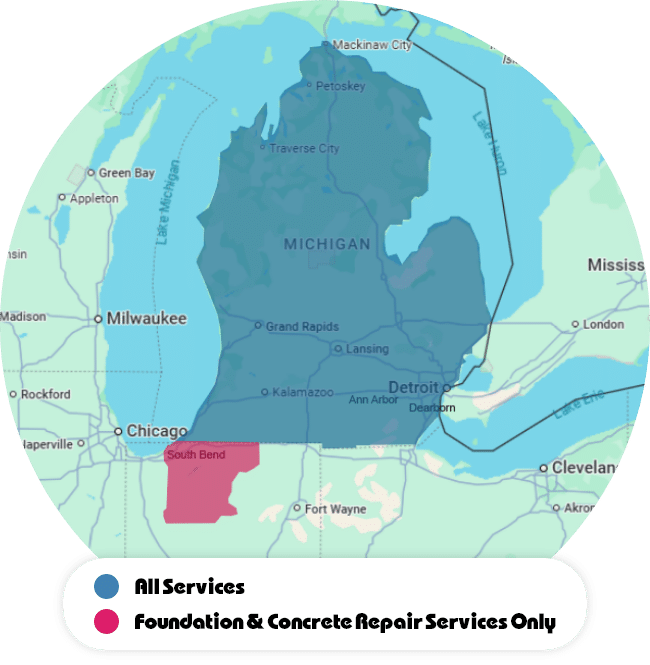Decoding Cracks in the Wall

A wall crack seems like something pretty simple - throw some spackle on it and you’re good, right? Not so fast.
There are many different causes of wall cracks, and everything from the direction to the placement of the crack can indicate a different cause. And it’s virtually never as simple as throwing some spackle on it.
Let’s go over the kinds of wall cracks you may see in your foundation, and what they mean.
Vertical
Vertical wall cracks can be a common side effect of concrete shrinking as it cures. I want to emphasize “can” here, because even though curing cracks aren’t always something to worry about, it’s important to keep an eye on them. If you notice them widening, or they get to the point that you can fit a dime in the crack, it’s time to call us.
The major cause of vertical wall cracks outside of concrete curing is foundation settlement. Cracks can appear on the foundation walls as well as the walls of the house as everything else sinks to meet the foundation. When the foundation has settled enough that the affected corner of the house begins to rotate outward, you’ll see a vertical crack that’s wider at the top than the bottom. No matter the cause, these cracks can allow a large influx of water, which will not only get your basement wet but can further widen the crack.
Horizontal
Horizontal wall cracks are often accompanied by bowing in the wall and are caused by soil movement that puts pressure on the foundation wall. As pressure from the soil continues, the wall will bow further and the crack will widen. A wall can only bow so far before gravity takes over and you have a full wall collapse to deal with.
Pressure from the soil can be due to soil composition or severe weather shifts. For example, when the ground freezes it contracts, but it expands upon thawing. It can push into the walls if it expands beyond its former space (due to heavy saturation).
Stair Step
The stair step crack sounds (and looks) like a unique situation, but it all has to do with the composition of the foundation wall. Stair step cracks form in block walls (as opposed to poured concrete). As the wall crack begins to form - regardless of the cause - it can travel along the mortar joints between individual blocks, forming the stair step appearance.
Stair step cracks are indicative of foundation issues, be they settlement or bowed walls, and need to be addressed promptly. Water influx can degrade the mortar between blocks and threaten the integrity of the wall; this is another situation where complete wall failure is possible.









